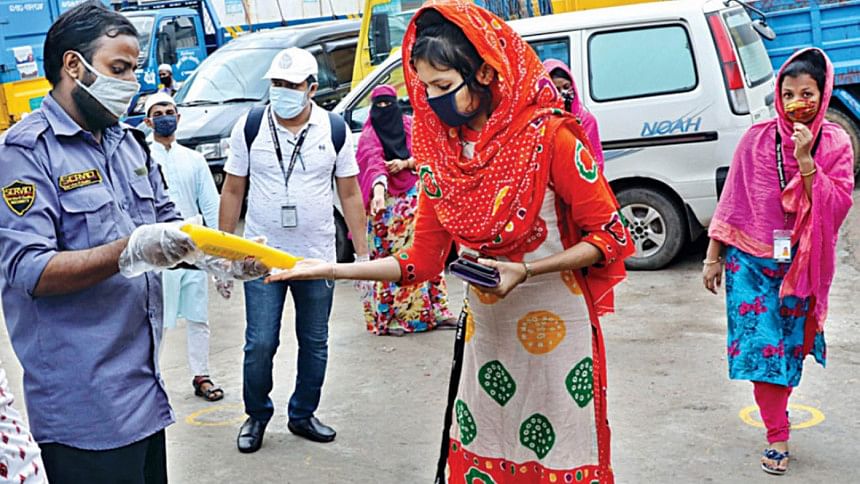Covid-19 fallout: One-third of the young women previously employed now jobless

One-third of the young women who were employed before the pandemic were out of jobs as of January 2021 due to the impact of Covid-19.
The rate of unemployment following the pandemic is three times higher in women at 29 percent than that among men at 11 percent.
Among those who found a job later, income recovery dropped by 21 percent for female youths and by 10 percent for male youths as of January 2021.
The data above was presented by Dr Imran Matin, executive director of Brac Institute of Governance and Development (BIGD), in a webinar today.
The webinar, titled 'Building a resilient ecosystem for women in the skills sector: challenges and prospects', organised the webinar as part of celebrating 'World Youth Skills Day' which is on July 15.
Respondents in the study pointed out that private tutoring, handicrafts, factory jobs, tailoring and light engineering are among the areas in which more young women used to find employment conventionally but these are among the hardest hit areas of the economy in the pandemic.
The respondents also think that recovery of these particular areas will be tough and take time even when the pandemic is over thus making it difficult for female youths to come back to paid employment.
Highlighting the survey findings, Dr Matin said a large number of working women being out of paid work for such a long period may cause many to permanently leave the job market which may further reduce the already low rate of women's labour market participation.
Covid-19 shock may threaten to undo much of the progress made around women's empowerment unless corrective measures are taken, he added.
At the webinar, speakers emphasised on greater awareness on the importance of technical and vocational education, and training and development of other skills relevant to both local and global economies.
Joydeep Sinha Roy, head of operations of Brac SDP, presented the findings from SDP's implementation experiences over the years at the event.
The presentation pointed out that culture and traditional gender roles, gender stereotyping, lack of career guidance, safety concerns particularly fear of gender-based violence and sexual harassment, family responsibilities, and availability of quality apprenticeship occupations are the major barriers for adolescent girls' and young women's access to skills learning.
Brac's Gender, Justice and Diversity Programme director Nobonita Chowdhury emphasised bringing change in designing proper interventions. "Instead of designing interventions separately, we need to focus on making integrated interventions in line with mainstreaming women empowerment in different sectors," she said.
ILO programme officer (M&E) for Skills 21 Project Tahmid Arif said, "Changing mindset is crucial not only for skills training of female youths, but also for their employment. Conducting training is not enough. We also need to make sure those who receive training also get an employment opportunity and the opportunity has to be sustainable."
Highlighting the harsh impact of Covid-19 on female workforce, Neda Society ED Jahanara Beauty said, "During the pandemic many employers opted to keep male ones instead of female youths in informal sectors. As many women had to leave their job, it impacted not only their income or employment but also their surrounding situations. There was sharp decline in their savings, while violence against women increased and incidents of child marriage rose drastically."

 For all latest news, follow The Daily Star's Google News channel.
For all latest news, follow The Daily Star's Google News channel. 



Comments